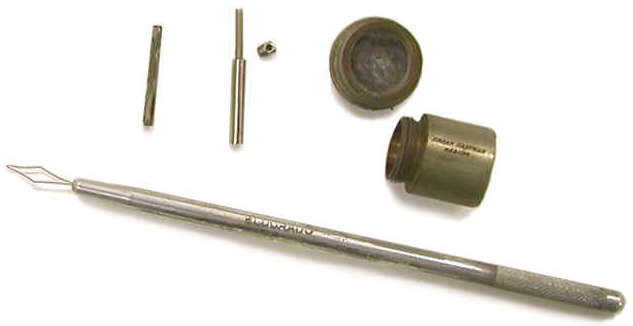The Unsung Legacy of Henrietta Lacks: A Story of Immortality
Written on
Chapter 1: Introduction to Henrietta Lacks
Henrietta Lacks is a name that many may not recognize, yet her contributions to science are monumental. The HeLa cells, derived from her cervical cancer tumor, are the most widely utilized cell line in biomedical research today.
I have personally cultivated HeLa cells almost every day for over four years, and I have authored two scientific papers utilizing these cells to explore cellular processes that may lead to future medical treatments. It is astounding to consider that if we gathered all the HeLa cells cultivated in laboratories, they could circle the Earth at least three times. HeLa cells measure approximately 20 micrometers in length, while the Earth's circumference is about 40,000 kilometers (25,000 miles).
HeLa cells originate from a tumor in Henrietta Lacks, a real woman who had no idea she would change the course of medical history.
Henrietta was born in 1920 in Roanoke, Virginia. Tragically, her mother passed away when she was young, and her father abandoned her and her siblings, forcing her to live with her grandfather. At just 14 years old, she became a mother for the first time with her cousin Day, who later became her husband.
After giving birth to her fifth child, Henrietta began experiencing severe pain. She and Day traveled over 30 kilometers to seek medical attention at the nearest hospital that treated Black patients. Even there, they were segregated into a separate room designated for Black individuals.
She was diagnosed with epidermoid carcinoma of the cervix and underwent a common cancer treatment of the time: radium tube inserts. These tubes, filled with radium, a radioactive substance, were implanted near the tumor, based on the belief that radium could eradicate cancer cells. While it did kill some cancer cells, it also caused mutations in healthy cells, leading to the suffering and death of many patients.

On the day the doctor inserted these tubes into Henrietta’s uterus, he also took two small samples: one from healthy tissue and one from the tumor. At that time, doctors were not required to obtain consent from living patients to collect samples, only from deceased patients. Thus, Henrietta's cells were taken without her knowledge or consent.
The samples were sent to George Gey, a cell biologist who was attempting to cultivate human cells in the laboratory. Until then, all human cells he received died within hours or days, making it challenging to conduct experiments. The need for a human cell line that could thrive in culture was pressing.
When Gey received Henrietta’s cells, his technician placed them in a roller drum with a growth medium and left them for a few days. Upon returning, she discovered that not only had the cells survived, but they had also divided and multiplied. They were split and cultured further, continuing to grow indefinitely.
HeLa cells became known for their immortality, capable of dividing endlessly. This breakthrough garnered interest from scientists worldwide, and Gey began sharing the cells with research labs everywhere. The implications were vast!
Meanwhile, within Henrietta's body, the cells continued to proliferate, spreading to her lymph nodes, hip bones, lungs, and bladder. Eventually, she developed tumors throughout her body and succumbed to her illness at the age of 31.
HeLa cells have not only provided insights into cancer characteristics but have also played a crucial role in developing the polio vaccine, chemotherapy, in vitro fertilization, and understanding cell division, apoptosis, chromosomal counts, and gene organization. The list of contributions is extensive—all thanks to Henrietta Lacks.
Sadly, she never learned of her legacy, passing away shortly after her cells were harvested. Her family, too, remained unaware of the global impact her cells had until decades later, when contamination issues required genetic testing involving her relatives.
Despite saving millions of lives and benefiting numerous pharmaceutical companies, Henrietta's descendants struggle to afford healthcare. The question remains: how just is this situation? Would things have been different had her family not been Black?
For those interested in delving deeper into this story, I highly recommend "The Immortal Life of Henrietta Lacks" by Rebecca Skloot. It is through her work that we have come to know about Henrietta and her extraordinary legacy.
Chapter 2: The Impact of HeLa Cells
In this video, titled "Henrietta Lacks | Her Impact and Our Outreach," explore how Henrietta's story continues to resonate in the fields of science and ethics.
The second video, "Henrietta Lacks' family settles with biotech company over cancer cells," discusses the ongoing implications of her cells and the recent settlement involving her family.